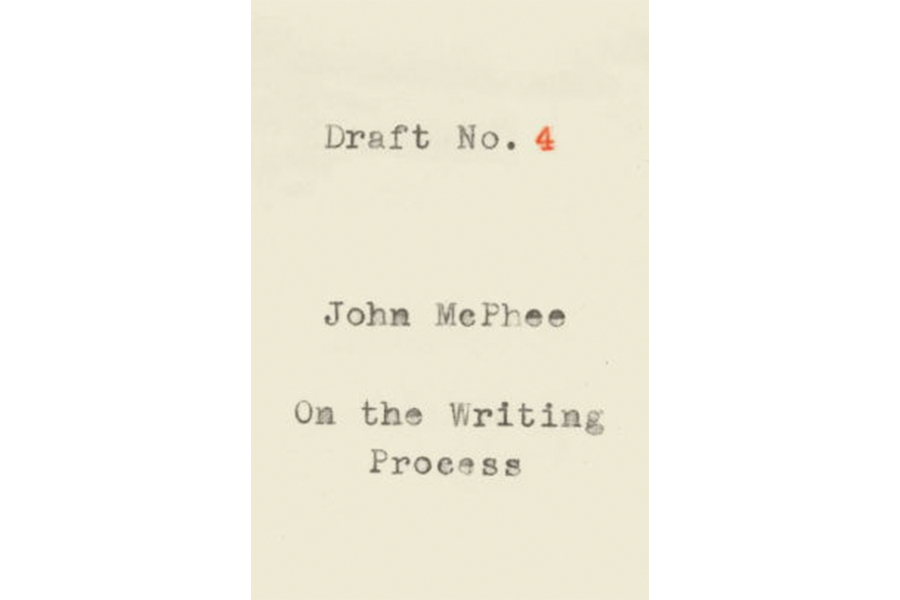'Draft No. 4' is as lean and punchy as legendary author John McPhee's earlier work
Loading...
“I am constantly meeting ladies who say 'how lovely it must be to write,'” novelist Patrick White once confided to a friend, “as though one sat down at the escritoire after breakfast, and it poured out like a succession of bread and butter letters, instead of being dragged out, by tongs, a bloody mess, in the small hours.”
If any living American author has faced that bloody struggle in the small hours, it's Pulitzer Prize-winning nonfiction writer John McPhee, who began his writing career at the New Yorker over 50 years ago and has written hundreds of deadline pieces and dozens of books, including such classics as "The Pine Barrens," "Looking for a Ship," "Annals of the Former World," and "Coming into the Country." From his position as a journalism professor at Princeton University, he's taught an entire generation of writers. He's now nearly 90, and his new book, Draft No. 4, has the subtitle “On the Writing Process." It's a short work with a plain white cover, the kind of thing that on first glance looks like the easy, self-indulgent afterthought a laureled writer might produce more or less as an exercise in “late” style.
Not so, thankfully. "Draft No. 4" is as lean and punchy a book as anything McPhee wrote in his thirties. It's also as easily distracted. When writing about his own writing, McPhee likes to stress how rigorously he's honed his craft over the last half-century of teaching students and meeting deadlines. This new book has dozens of such nods, most of them amusing; “I work in a fake medieval turret on the roof of a campus building. When I come out and walk around bumping into friends, they ask me, 'What are you working on?'” he quips at one point. “Which is one reason I don't often come out and walk around." Once captured, he tells his students (and in a book by John McPhee subtitled “On the Writing Process,” that means pretty much everybody), words have to be dealt with: “You have to trim them and straighten them to make them transliterate from the fuzziness of speech to the clarity of print.”
But there's plenty of fuzziness in "Draft No. 4," and those readers will be glad of it. The book's ostensible focus of imparting the wisdom accumulated over a lifetime of writing blurs often and very enjoyably with reminiscences about McPhee's own long apprenticeship in the craft; readers are treated to many digressions about the crafting of journalistic pieces that would later become prize-winning books, and there are many warm recollections of the author's time at the New Yorker under William Shawn and Robert Gottlieb (and enduring the stern corrective pen of the magazine's legendary grammarian “Miss Gould”). There are stories about the work of interviewing, whether the subject was an anonymous fisherman or Woody Allen or Richard Burton, that are at least as much about the fun (and perhaps the fame) as about the form.
And when McPhee does concentrate on that often torturous process that White described, dragging out the words with tongs in the small hours, "Draft No. 4" glows with confidence. In those sections, McPhee talks about the basics of creating effective prose, beginning with the structure on which everything else will be built. Readers aren't supposed to notice the structure of a piece, he writes; “it is meant to be about as visible as someone's bones.” As with the best of his earlier prose, even these instructions eventually batten down to the McPhee style, that signature combination of the terse and the evocative. More than most other writers, for instance, he can talk with experience about the writing of journeys, about how to give them life beyond the “mass of notes” from which they originate. “If you are starting a westbound piece in, say, Savannah, can you get past Biloxi without caffeinating the prose?” he asks. “If Baltimore – who is going to care if you get through the Cumberland Gap? New York? The Hackensack River. If you start in Boston, turn around.”
The book itself is a kind of journey, and not a linear one. Readers follow the master as he takes up craft-teaching for a dozen pages, veers into an anecdote from 50 years ago, swings around to an observation or two or 10 about current writing trends and triumphs, and eventually winds back to craft-teaching. That teaching isn't substantially different from any of the other 9,000 writing-handbooks to appear in the last decade – hone your opening paragraph, try composing in longhand, etc. – and its conclusions are nebulous enough (“What counts is a finished piece, and how you get there is idiosyncratic”) to be all things to all aspiring writers. The star attraction here isn't the method but the man; readers who go in knowing that will be endlessly fascinated – and may learn a good deal.








